Alocasia Plant Care: Simple Tips for Success

Alocasia are absolute essentials for creating that gorgeous tropical vibe indoors. Trouble is, many of us struggle to keep them looking as beautiful as when we picked them up from the nursery. If you are even mildly interested in Alocasias but are not sure how to grow them successfully, then this guide is just for you.
As members of the Aroid family, they share some unique characteristics that dictate their needs. Keep reading to find out what the perfect conditions are, what little tips and tricks you can apply to growing perfect Alocasias, and how to style them as elegantly as they deserve.
FUN FACT: Alocasia are often called Elephant's Ears because their foliage resembles the large, pointed ears of an elephant.
Alocasias Are Aroids: Why This Matters
Alocasias, along with other aroid varieties like philodendrons, monsteras, and anthuriums, all belong to the Araceae family, a huge genus that has evolved to thrive in tropical and subtropical environments. This shared lineage has a huge influence on how they grow and what they need to flourish indoors.
Aroids have specialised growth patterns and adaptations that help them often survive in filtered sunlight, lower down in the forest canopy where light is less prominent and humidity is on the high side. Often aroids have large, broad leaves that are designed to capture as much indirect sunlight as possible, allowing them to photosynthesise efficiently even with limited light. This explains why Alocasias prefer bright, indirect light indoors and why they may suffer in low-light or direct sun situations.

Water and nutrient needs are also affected by their natural habitat. Aroids typically grow in well-draining soil or as epiphytes, often in areas with constant moisture but good aeration around their roots. Aroid root systems also often store water, allowing them to survive brief dry spells, but excess water can quickly lead to fungal issues. This is why proper watering techniques and well-draining soil are critical for their care.
Additionally, aroids have an interesting relationship with nutrients. In their native environments, they grow in nutrient-poor soils, relying on decomposing plant matter to feed them slowly over time. This makes them sensitive to overfertilization, as too much can cause salt buildup and burn their roots. A light, regular feeding schedule mimics their natural nutrient intake and supports healthy growth.
Understanding these aroid-specific characteristics will help tailor your care routine, allowing you to mimic the plant’s natural environment indoors. By providing the right light, water, and nutrients, you can create the ideal conditions for your Alocasia to thrive. So let's get into it!
HOW TO PROVIDE YOUR ALOCASIA WITH THE BEST CARE INDOORS

LIGHTING FOR ALOCASIAS
Alocasias thrive in bright, indirect light. In their natural habitat, they tend to grow beneath large forest canopies, so when choosing a place in your home, know that they perform best when placed near windows where they receive filtered sunlight. Filtered sunlight can often be provided by using a sheer curtain or choosing a window that has some shrubbery or trees growing outside that creates dappled light in your space.
It is important to avoid direct sunlight, which can burn your Alocasia's delicate leaves, while too little light can stunt growth and cause weak, floppy, and unhealthy plants. These plants can tolerate some lower light conditions, but optimal light exposure boosts photosynthesis, producing more vigorous full growth.
Top Tip: In low light, plants produce less chlorophyll, which can explain the pale or yellowing leaves in underlit conditions. Alocasias are especially sensitive to this.

WATERING ALOCASIAS
Alocasia needs consistent moisture but is prone to root rot if overwatered. This often can be a hard balance to strike. The key is to let the top 6 cm of soil dry out before watering again. Otherwise, consider purchasing a moisture meter to assist with knowing how wet your potting soil is near the root zone.
When it comes to assisting with moisture regulation for your Alocasia, consider your planters carefully. Always choose planters with sufficient drainage; if this is not possible, then use your desired planter as a cover pot, and simply slip the nursery pot your plant is housed in into the cover pot.
Unglazed clay planters such as terracotta are the ideal option for growing Alocasia. Clay is a super material; it has the amazing ability to regulate moisture in your potting soil by drawing excess moisture away from your plants roots, preventing root rot and other fungal infections due to excess moisture. Unglazed clay is also highly breathable, allowing for better aeration within the potting soil, which is important for strong, healthy growth in your Alocasia.
Be sure to check in with your plant on a regular basis, but avoid watering unnecessarily. Make sure to test the potting soil with either the moisture meter or sticking your finger 6cm deep into the soil; if it feels dry, then proceed with watering. Pouring out any excess water that has collected in the base after 15 minutes. Below you will find more information regarding symptoms to look out for in an unhappy alocasia.

HUMIDITY FOR ALOCASIAS
Alocasias love humidity, needing levels of 60–80% to mimic their tropical origins. If you notice that the air is dry in your home or you frequently use air conditioning or heaters, especially in winter, consider relocating to a more humid room like a warm bathroom or kitchen, using a humidifier, or placing a pebble tray with water under the plant to create a localised humid space. Other alternatives are to cluster a variety of tropical plants together; this will both create a visually appealing display as well as create a comfortable environment for your Alocasia. You can also mist the leaves occasionally, but avoid overdoing it, as consistently wet leaves can invite fungal diseases.

TEMPERATURE FOR ALOCASIAS
Alocasias prefer temperatures between 18 and 27 °C. Exposure to temperatures below 16° can trigger dormancy, where the plant will drop its leaves and stop growing, often leaving you with what looks like an empty pot. If this does happen to you, be sure to check the bulb to make sure no rot has set in. If it is firm and plump to the touch, it is likely that cool temperatures have turned your Alocasia into sleeping beauty, and a kiss of warmth should wake it up in no time.
To avoid cool temperatures causing dormancy, keep your Alocasia away from cold drafts, air conditioners, or chilly windows. If your plant enters dormancy, reduce watering and keep the soil just barely moist until it starts to show life again.
HOW TO MANAGE HUMIDITY IN RELATION TO TEMPERATURE
When caring for houseplants, it's important to understand the concept of Vapour Pressure Deficit (VPD). VPD is a term that describes the difference between the amount of moisture in the air and the maximum amount the air can hold; hence, the closer the equator you get, the more “muggy” the air feels. In simple terms, the higher the temperature, the more moisture the air can hold, and vice versa. This helps explain why some plants struggle when the humidity isn't just right for them.
Think of it like this: Plants are just like us; the hotter it is, the more they sweat, and the cooler it is, the less likely they are to "sweat.”
Temperature and humidity are closely related when it comes to your plants' optimal health. Consequently, when temperatures rise, such as in summer or when you turn on a heater in winter, the air's ability to draw water away from you and your houseplants increases. Meaning that if your home is naturally warm, their is a likelihood that your humidity is low. Putting your plants through stress and dryness if they lose water faster than they can draw up from the soil.

On the other hand, if the temperature drops, cooler air holds much less moisture. You might think adding more humidity is helpful, but the lower temperature may already reduce how much water your plant loses naturally.
For healthy growth, you need to balance both temperature and humidity. If it's hot, you may need to offset this by increasing humidity with a humidifier, pebble tray, or by misting your house plants. If it's cooler, make sure you're not overdoing the moisture, as too much humidity in low temperatures can lead to mould and rot. If you are finding that your humidity levels are a little to high, the way to mitigate this is to increase airflow by cracking a window or placing a fan in the space and allowing it to move the air around without directly blowing cool air onto your tropical wonders.
Understanding VPD for Your Indoor Plants
Vapour Pressure Deficit (VPD) might sound technical, but it's actually a simple concept that can revolutionise how you care for your indoor plants. Think of VPD as your plants' comfort meter—it measures how thirsty the air is for moisture.
What is VPD, and Why Should You Care?
VPD combines temperature and humidity to determine whether your plants are in their optimal growth zone. Similar to humans, plants thrive within specific VPD ranges. Too high and your plants will lose water too quickly; too low, and they might develop mould or struggle to take up nutrients.
Using the VPD Chart for Indoor Plants
What you need:
- Thermometer: a tool for measuring temperature
- Hygrometer: a tool for measuring humidity
Using a VPD chart is surprisingly straightforward. First, measure your room's temperature (in °C) and relative humidity. Find these values on the chart and where they meet—that's your VPD value in kPa (kilopascals).
For example, in a room at 24°C with 60% humidity, your VPD would be 1.09 kPa. This would be perfect for plants in their mature growth phase, like a monstera or pothos that's actively growing new leaves.

The Growth Stages and Optimal VPD
Different growth stages need different VPD levels:
- Green Zone: 0.4-0.8 kPa: Ideal for cuttings and young plants
- Blue Zone: 0.8-1.2 kPa: Perfect for established plants in active growth
- Purple Zone: 1.2-1.6 kPa: Best for mature plants and flowering species
- Red Zone: Danger zone (below 0.4 or above 1.6 kPa)
Top tip: Plant leaves are typically 0.6°C cooler than room temperature, which this chart already factors in.
Remember: If your VPD falls below 0.4 or above 1.6 kPa, you'll want to adjust your growing conditions to keep your plants happy and healthy.

FERTILISING ALOCASIA
As we now know. Alocasia are part of the Aroid family, who in their native habitats grow nutrient-deficient soil and rely on the decay of leaf matter and other organic compounds as their nutrient source.
Feed your Alocasia at least once a month during the growing season (which is spring through early autumn) with a balanced liquid fertiliser diluted to half strength. Fertilising encourages leaf growth and overall plant health, providing essential nutrients like nitrogen, potassium, and phosphorus. During the winter, cut back on feeding unless you notice some new growth; this will prevent nutrient and salt buildup during your plant's least active period.
A GOOD RULE OF THUMB FOR HOUSEPLANTS
-
If your plant grows quickly, feed more regularly, i.e., every second watering.
-
If your plant grows slowly—like Alocasia and many indoor trees—feed weakly on a monthly basis.
For more about Fertilising house plants, read Guide to fertilising houseplants
PRUNING ALOCASIAS
While Alocasias don’t require regular pruning, removing dead or yellowing leaves can promote healthier growth and will keep your plant looking fabulous. Pruning also helps the plant focus energy on new, vibrant leaves rather than sustaining older, declining ones. Use clean, sharp cutting utensils and cut at the base of the leaf stem.

REPOTTING ALOCASIAS
Alocasia in general only needs repotting every 1-2 years or when the plant becomes root-bound and you notice roots peeling out of your planters drainage holes. Repotting too often can lead to severe stress and slower growth from your plants. The best time to repot is in spring, during your plant's active growing season. The reason for this is to encourage faster recovery from any transplant shock or damages that may occur during repotting. Choose a pot that's 3 cm to 5 cm larger in diameter than the current one, with drainage holes, and use a well-draining mix made of equal parts potting soil, perlite, and orchid bark. This airy mix will prevent the roots from sitting in water and support healthy growth. See the ideal potting mix below:
The perfect Aroid potting mix recipe:
Yield: Generates approx. 15 cm diameter grow pot; multiply as needed
2 cups organic potting soil
¼ cup Perlite
1 cup orchid/fine milled bark
2 tbsp organic slow-release fertiliser
Top Tip: When repotting your Alocasia, mix in a handful of old potting soil—unless it is diseased. This helps introduce beneficial microbes from the previous environment, speeding up the establishment of a healthy microbiome in the new pot. A well-established microbiome supports nutrient absorption, root health, and overall plant vitality, giving your Alocasia a stronger foundation for thriving in its new soil.

COMMON PESTS IN ALOCASIAS
Alocasias, prized for their striking foliage, are particularly vulnerable to pests when under stress, especially from spider mites, mealybugs, and scale insects. Each pest thrives in specific environmental conditions that are often the result of inadequate care or unsuitable growing environments. Below we will go into each pest and how to prevent or treat them
SPIDER MITE
Spider mites are attracted to Alocasias in dry conditions with low humidity. These tiny pests feed on plant sap, causing yellowing leaves, webbing, and a dusty appearance on the undersides of the plant’s leaves. Dry indoor air, common during cooler temperatures or in air-conditioned spaces, exacerbates their presence. To prevent infestations, increase humidity around your Alocasia according to our tips on humidity. Frequently, wiping down leaves with water and a mild soapy solution can also help deter these mites. For more information, checkout our Spider mite treatment guide.
MEALYBUG
Mealybugs are drawn to plants under stress, often due to overwatering, poor air circulation, high humidity, or insufficient light. These pests form cottony clusters along the stems and leaf joints, sucking the sap and weakening the plant. Mealybugs prefer warm, damp conditions, which are common when plants are kept in low-light, warm, moist areas. To combat this, ensure your Alocasia is placed in a bright spot with good free airflow and avoid watering too frequently. A natural treatment, such as neem oil or an organic pesticide, can help control an infestation. For more information, checkout our Mealybug treatment guide.
SCALE
Scale insects, characterised as hard bumps found on stems and the undersides of plants, thrive in environments with stagnant air and poor lighting. Like mealybugs, they feed on sap and can cause stunted growth, leaf discolouration, and leaf drop. Regularly cleaning your plant’s leaves and ensuring proper air circulation can both help you identify and prevent scale buildup. Promptly treat infestations with neem oil or a pesticide targeted at Scale to minimise damage. For more information, checkout our Scale treatment guide.
Overall, it is of utmost importance to make sure your Alocasia is getting its ideal care to prevent and avoid pest infestations. When infestations arise, treat them as quickly as possible to keep them under control, and inspect your plants on a regular basis.
TOP TIP: Do a preventative maintenance spray once a month with a diluted pesticide to keep pests at bay.

Common Symptoms with Alocasias and How to Solve them
- Yellowing leaves: This is often caused by overwatering or poor drainage, leading to root rot. Be sure to allow the top few centimetres (4cm – 6cm) of soil to dry between waterings and ensure the pot has proper drainage. Trim any yellow leaves to help redirect the plant’s energy into growing new roots and healthier leaves.
-
Leaf Loss: Alocasias enter a natural dormancy phase when exposed to colder temperatures and reduced light, typically during winter. During this period, it’s normal for the plant to experience leaf loss, which can be alarming for new plant owners. However, this is part of the plant's energy conservation process. As Alocasias slow down their growth, they shed older or damaged leaves to focus resources on surviving through dormancy. It’s essential to adjust care during this time by reducing watering and avoiding fertilisation, as the plant's need for nutrients decreases. Once warmer conditions return, Alocasias usually bounce back, producing new foliage.
Other causes can include overwatering, so if you suspect this may be the case over the cold, then remove the plant from it’s planter and check the bulb. If it is still firm, repot into a new well draining potting mix and place it in a warm, bright position. Keep caring for the plant and in time it should grow again. If the bulb is mushy, rot has set in, and you may need to gently cut away damaged flesh and dab on a little ground cinnamon. You can then replant it and give it a little time to see if it will resprout. - Crispy, brown leaf edges: Caused by low humidity or underwatering. Boost humidity with a humidifier or by grouping plants together; also check in on your VPD and see how much humidity you need to keep your plant as happy as you can in your home. Make sure to water the plant more consistently, ensuring the soil never completely dried out.
- Drooping leaves: A sign of stress from improper watering, poor lighting, or transplant shock. Assess if the plant is over or underwatered, and adjust accordingly. Relocate to a spot with more indirect light or let the plant acclimate if recently moved, this process can take up to a month or longer.
- Stunted growth: Often this is due to insufficient light or a nutrient deficiency. Try moving your Alocasia to a spot with brighter, indirect light and fertilise monthly during the growing season with a balanced fertiliser diluted to half strength. This should encourage new shoots within a few weeks. If this does not spark any new growth, consider repotting your Alocasia, as it may be that your plant is root-bound.
- Brown spots on leaves: When plants are overwatered or exposed to too much humidity without adequate ventilation, a fungal infection can develop, resulting in brown spots on the leaves. If the potting soil is very wet, water the plant less frequently; crack open a window or set it apart from other plants to increase air circulation; and remove any damaged leaves. To assist with recovery, use a fungicide, such as Copper Soap, to prevent further spread.
- Leaf Curl: Usually a response to low humidity or some form of pests like spider mites. Inspect your plant for any pests you may note and increase humidity. If pests are spotted, treat your Alocasia with neem oil or a gentle organic pesticide like Pyrol. Be sure to also to check in more regularly with your plant and to adjust watering habits to ensure the plant isn't drying out.
- Pale or faded leaves: indicate too much direct sunlight or a lack of nutrients. Check in and see if there is any harsh direct light hitting your plant. If this is the case, move the plant to a spot that is less direct but still has some good, bright, filtered light. Make sure to get a quality feed and feed your plant on a regular basis to ensure it is getting the nutrients it needs during its growing phase, as the soil tends to deplete of nutrients within about 3 months of repotting.
Did You Know? There is a Difference Between Alocasia and Colocasia?
Alocasia and Colocasia are often mistaken for one another, thanks to their similar appearance, but they have some clear distinctions. Both belong to the Araceae family, but their leaves and growth habits are what set them apart. Alocasia leaves stand tall with a striking, arrowhead shape and pronounced veins, giving them an architectural presence. On the other hand, Colocasia—also commonly called "Elephant Ears"—has" broader, heart-shaped leaves that tend to droop downward, which adds to the confusion.

When it comes to growing preferences, Alocasia enjoys drier, well-drained soil and thrives in bright, indirect light. In contrast, Colocasia loves moisture and is often found growing in or near water sources.
Beyond its striking appearance, Colocasia has practical use in the culinary world. Its tuberous roots, known as taro, are a key ingredient in many dishes across Southeast Asia, India, the Pacific Islands, and parts of Africa. Taro is transformed into everything from traditional Hawaiian poi to crispy taro chips and hearty curries. While Alocasia is primarily grown for its bold aesthetic (and is toxic if consumed), Colocasia offers both beauty and sustenance, making it a truly versatile plant!
7 Ingenious Ways to Show Off your Alocasia Plant: The Ideal Spot for Both Light and Beauty

Displaying Alocasia in the proper way will bring out its vibrant foliage and make it stand out from the crowd. These tropical plants thrive in bright, indirect light, so positioning and styling play a key role in their health. Here are seven creative and practical ways to showcase your Alocasia while enhancing your home's interior design.

1. Elevate with a Woven Basket
For a cosy, natural look, consider placing your Alocasia in a stylish basket. Baskets are great for softening the boldness of an Alocasia while allowing it to breathe. Pair your plant with the Talala Basket or Sinan Basket for a minimalist yet organic feel.
For an Alocasia that’s grown to a larger size, a floor display can make a big impact. Choose a large basket, like the Sinan Black Stitch Basket, to house your plant, ensuring the basket adds texture and warmth to the room. Position it near a window that receives filtered sunlight out of any cool drafts for the best lighting conditions.

2. Statement Ceramic Pot on a Plant Stand
A ceramic pot gives your Alocasia a timeless look. Choose one with a colour that contrasts or complements the deep green leaves. Pair it with a Shing Plinth Planter or a tabletop stand and sleek cermaic to bring height and presence to a corner with bright, filtered light. The elevation adds elegance, making your Alocasia a visual masterpiece.

3. Create a Hanging Moss Ball Display
For a more artistic touch, try a 'Kokedama', or mossball display. Alocasias thrive in humid environments, and this method naturally increases moisture around the plant. Suspend the moss ball near a window with sheer curtains to filter light. Moss balls are not only a visual treat but also add a whimsical, nature-inspired element to your décor. Go crazy; mix it up with trailing and upright options like Alocasia for a visually appealing focal point.

4. Bright Window Corner with a Bold Planter
Place your Alocasia in a bright corner using a pop of colour from the Pastille Planter range. The pot's clean lines will accentuate the plant’s dramatic leaves, while the bold, bright colours will brighten up a dull corner and give your Alocasia the indirect sunlight it craves.

5. Cluster with Other Plants in Terracotta
Terracotta planters are perfect for regulating moisture levels while giving your space a warm, earthy tone. Group your Alocasia with other other varieties of indoor plants that love the same conditions to create a lush, jungle-like corner. The porosity of traditional terracotta helps prevent overwatering—ideal for keeping Alocasia happy. Though just selecting a variety of terracotta-toned planters as slip-cover pots can still create an inviting natural display, the clustering of plants can assist with the humidity demands of your Alocasia.
Another fabulous idea is to combine a variety of Alocasia species in one large planter. The various leaf forms, textures, and heights will combine to make a distinctive and captivating arrangement that resembles an alocasia bouquet. The trick is to select a planter big enough to hold them all together while maintaining their individual plantings, as different species can prefer different watering needs, and using a planter large enough to house them together.

6. Low Shelf Styling with Ceramic Accents
Position your Alocasia on a low shelf or sidetable near a window with indirect light. Opt for a stylish ceramic planter like the Daxi Planter or Boob Planter to give it a bold and contemporary look. Add complementary décor pieces, such as a small vase or candles, to keep the focus on the plant while enhancing the room’s overall aesthetic.
For more on how to style a stunning shelf, read: 8 styling ideas for indoor plant shelves.

7. Styling Tip for Alocasia in Water
For a modern, minimalist look, display your Alocasia in a clear glass vase with a few pebbles, submerging its roots in water. This stylish and simple setup allows the intricate root system to become part of the visual appeal, giving your space a fresh, contemporary vibe. Pair it with neutral décor or place it on a light wood surface to enhance its elegant, clean aesthetic.
How to Convert Your Alocasia to Water
To convert an Alocasia to water propagation, gently remove the plant from its soil, carefully rinsing the roots to remove all dirt. Trim off any damaged or unhealthy roots before placing the plant into a glass vessel filled with fresh water. Change the water weekly and ensure it’s in a spot with bright, indirect light to support healthy growth.
For more on growing plants in water, checkout: 10 Best Indoor Plants to grow in Water
By thoughtfully pairing your Alocasia with baskets, ceramics, and stylish planters, you can showcase its beauty while ensuring it thrives in your home.

Alocasias can be a bit particular when it comes to care, but with the right balance of light, water, and humidity, they’ll reward you with their stunning, exotic foliage. These tropical beauties thrive in bright, indirect light, making them ideal for spaces near large windows or areas with filtered sunlight. Proper care ensures your Alocasia grows into a show-stopping feature in your home. With its bold, arrowhead-shaped leaves and rich green hues, your Alocasia will not only attract attention but also transform into a striking statement piece that brings the vibrant allure of the tropics indoors.
Share any tips and tricks you have learnt after caring for your Alocasia, or let us know which are your favourites.





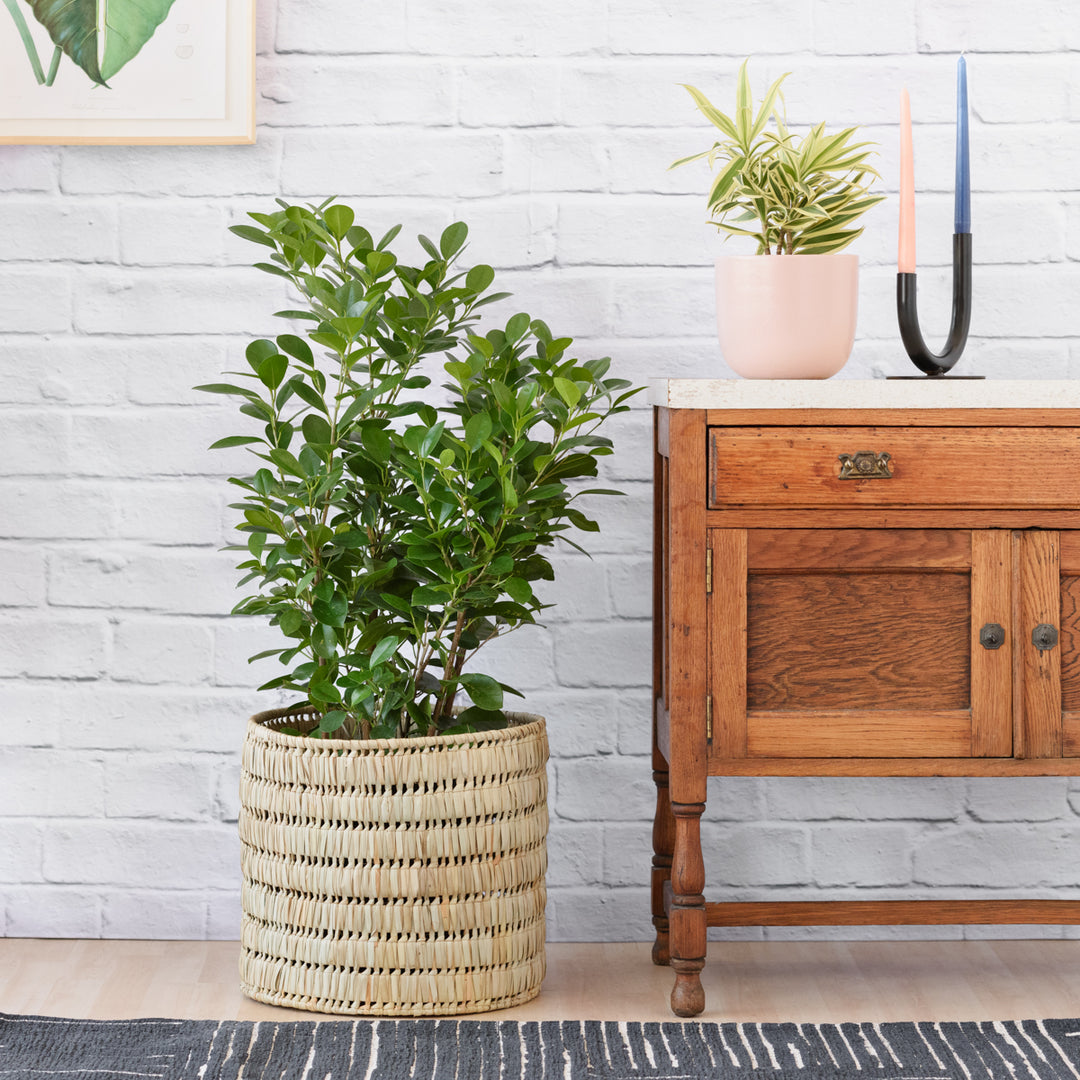
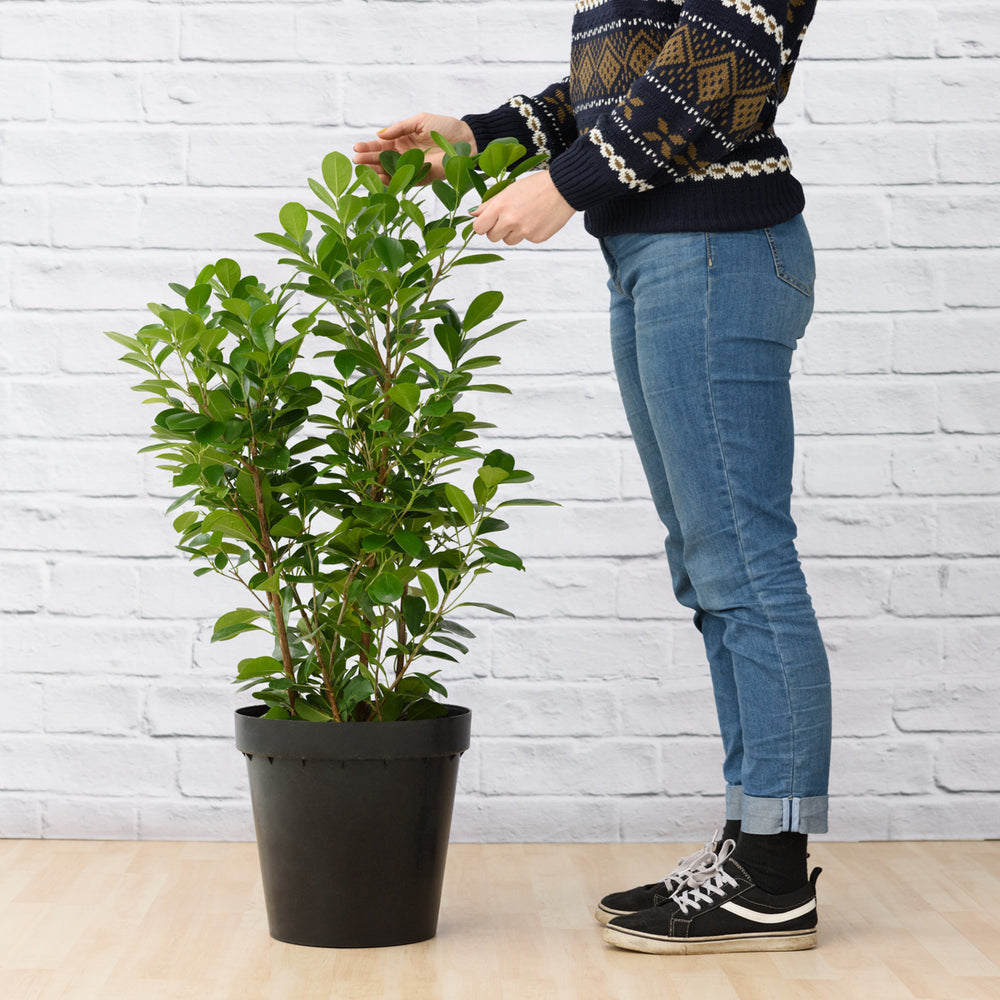
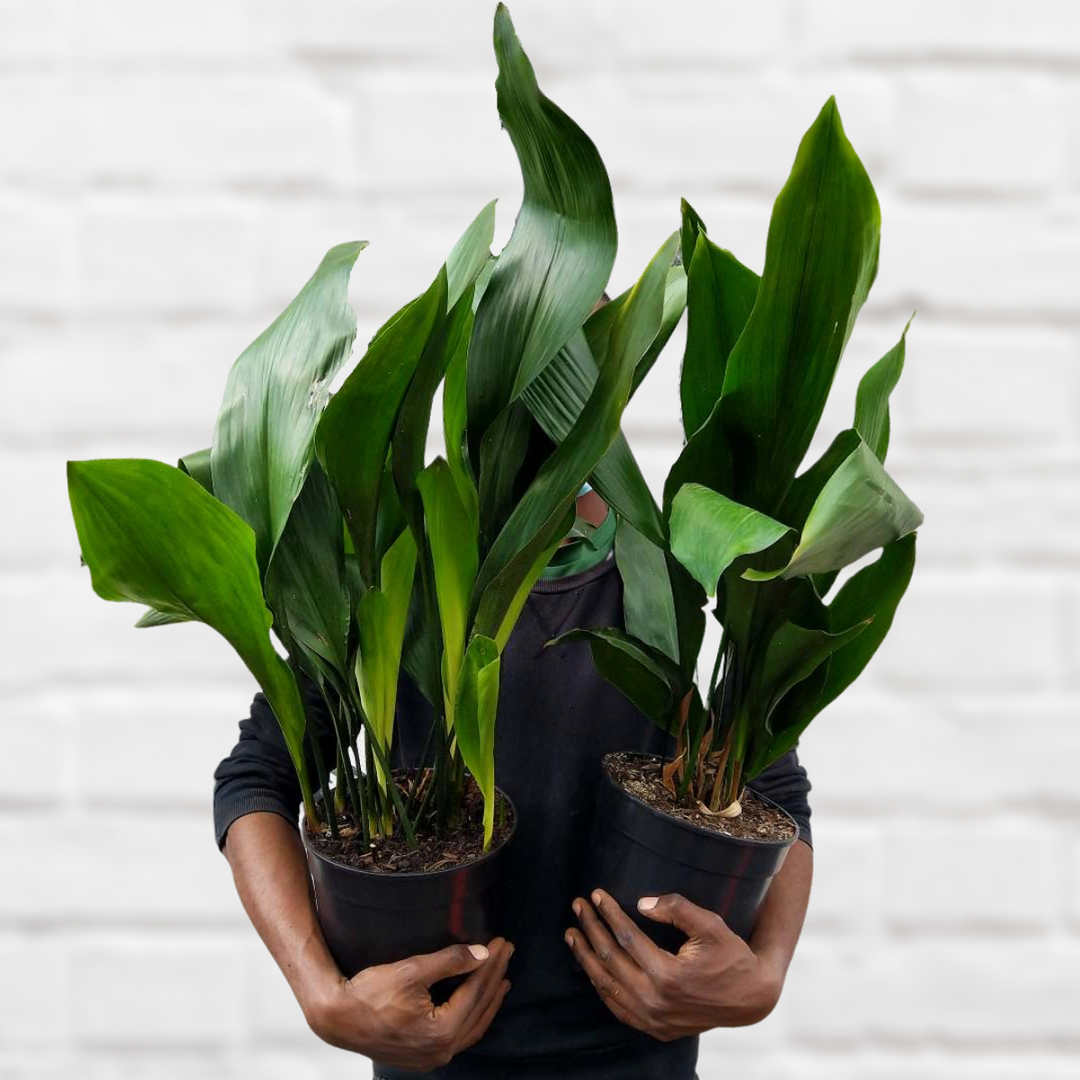
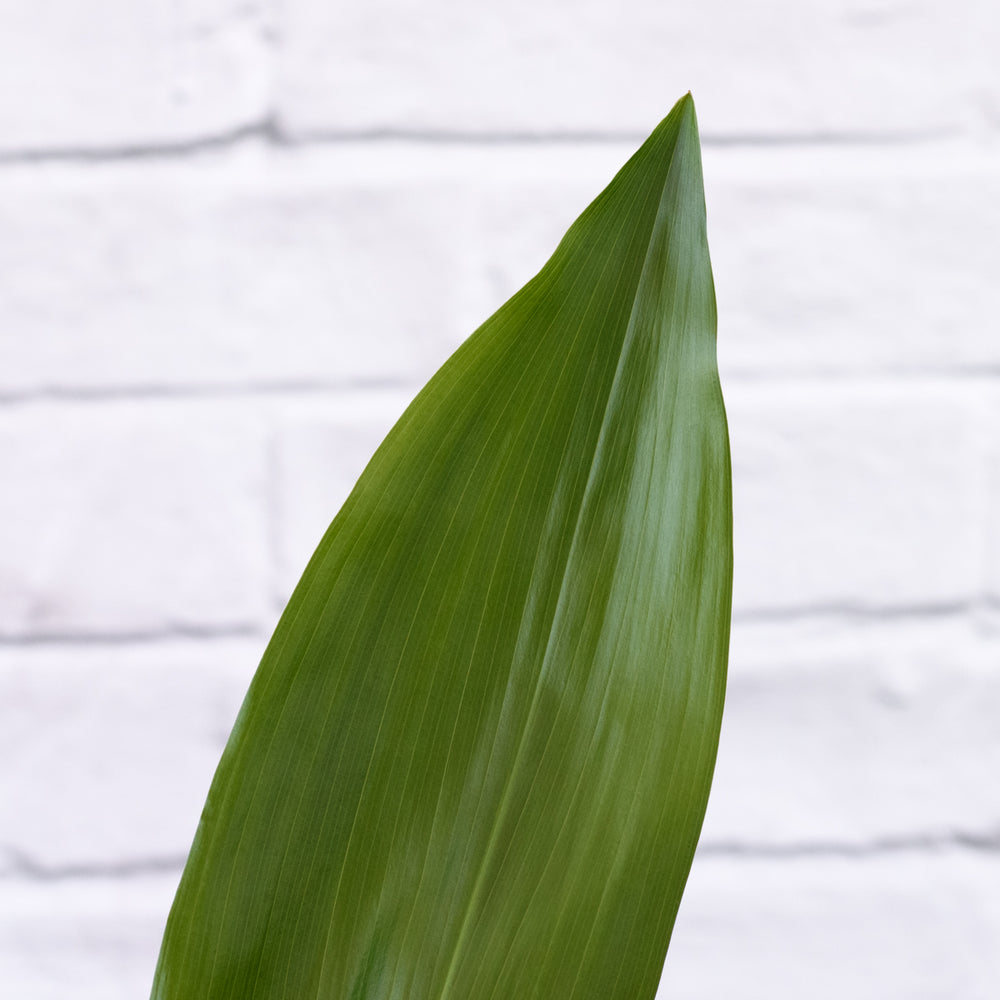
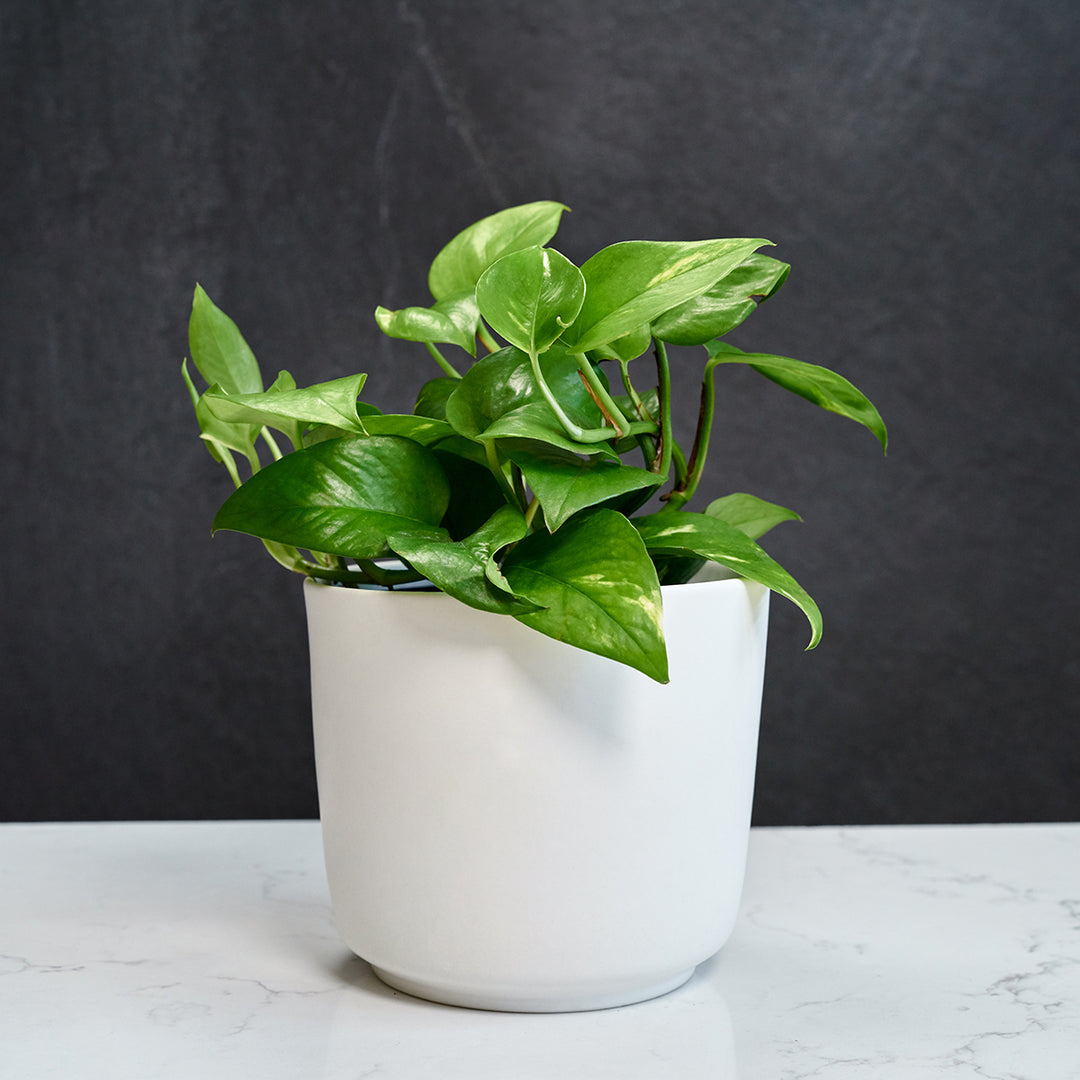
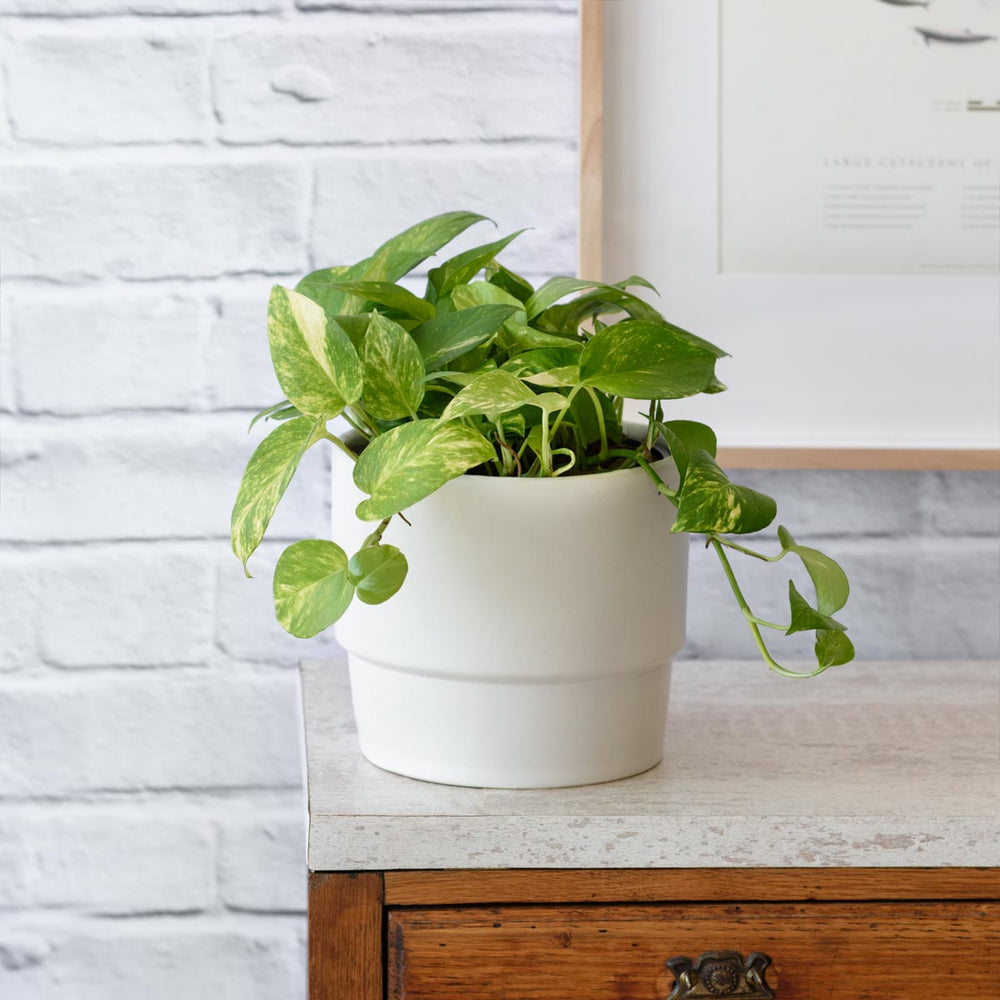
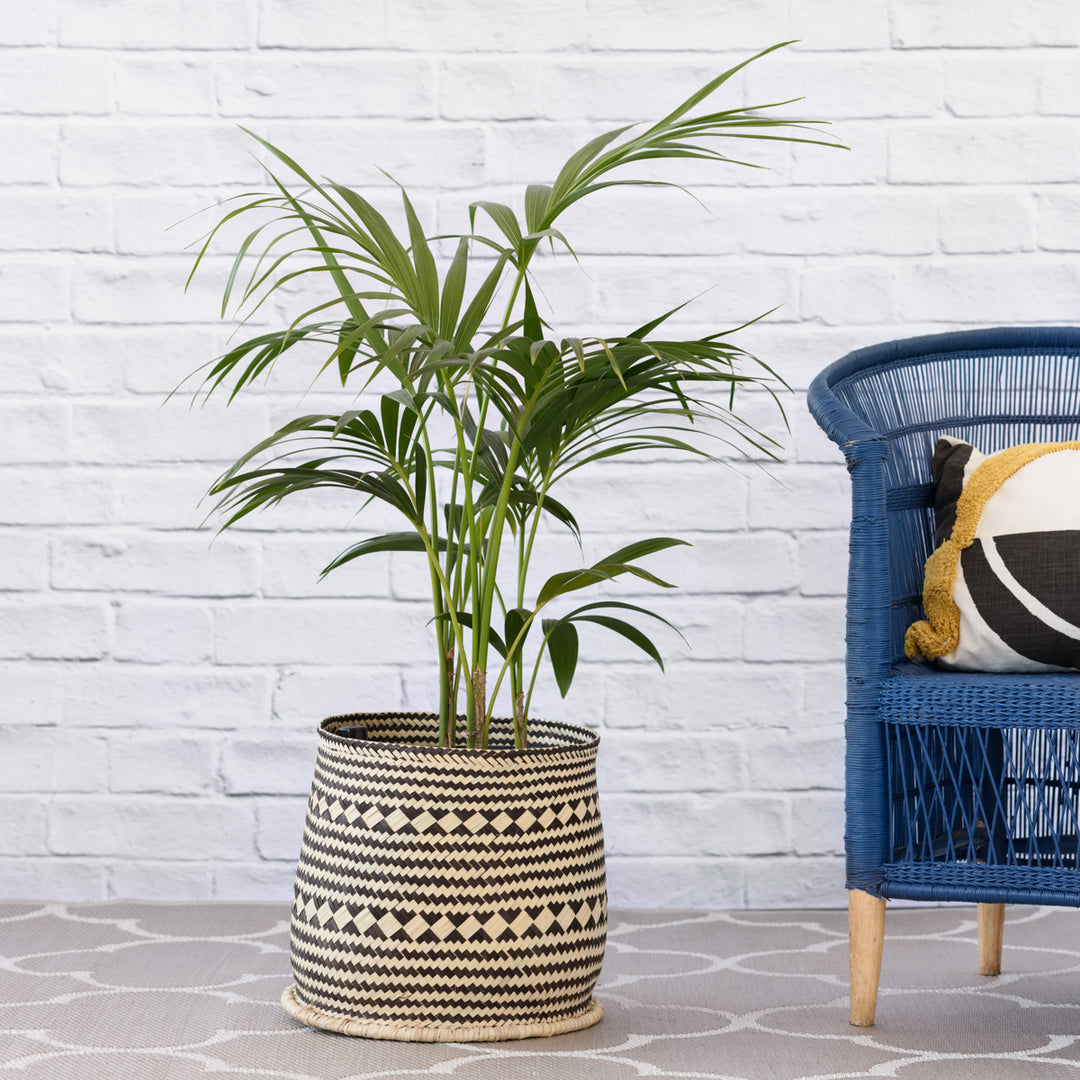
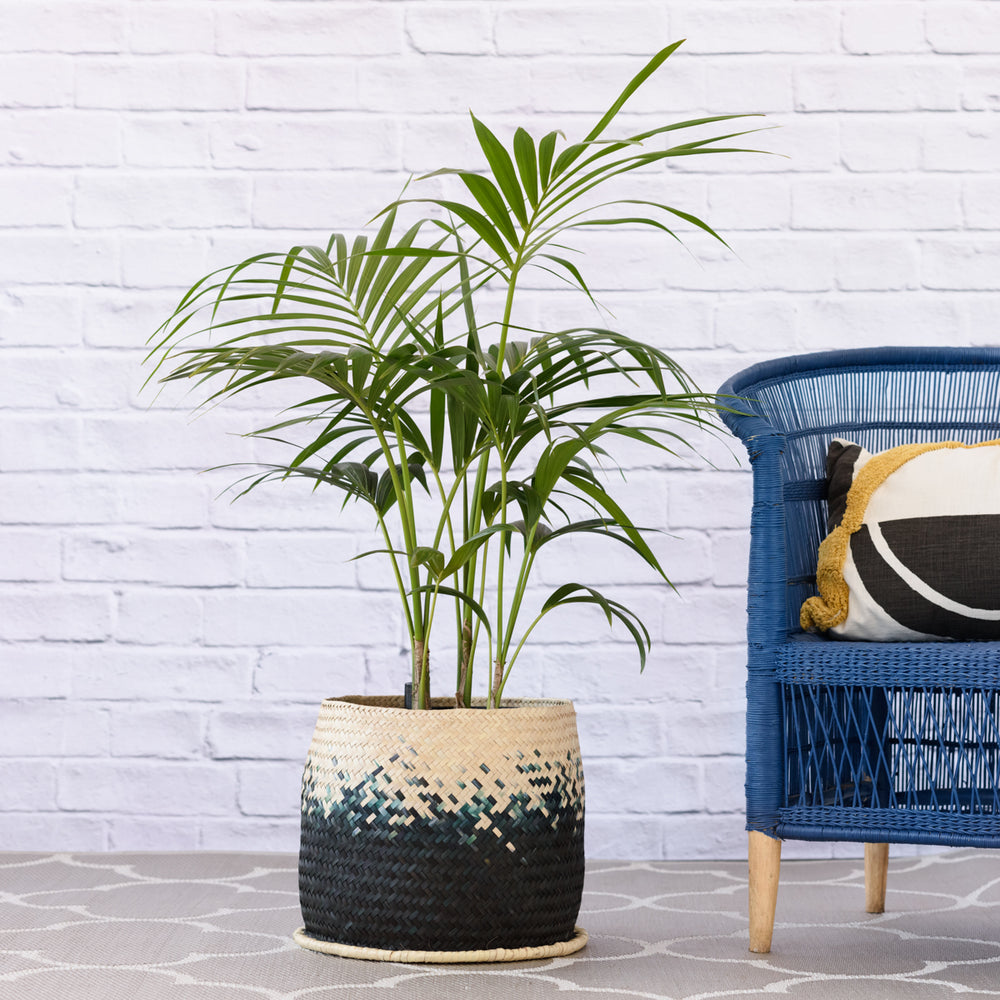

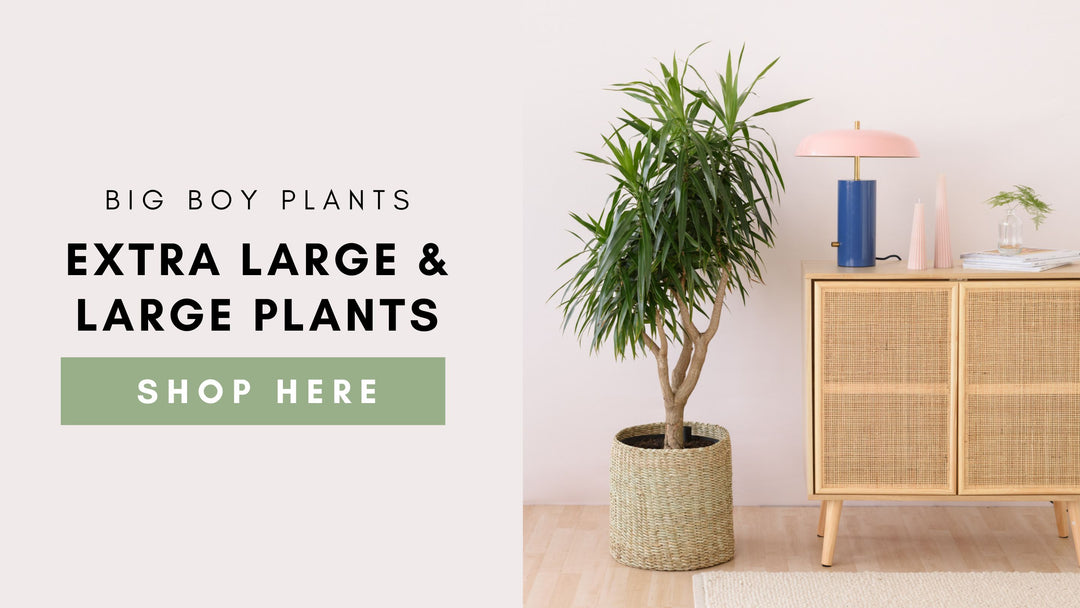
Leave a comment